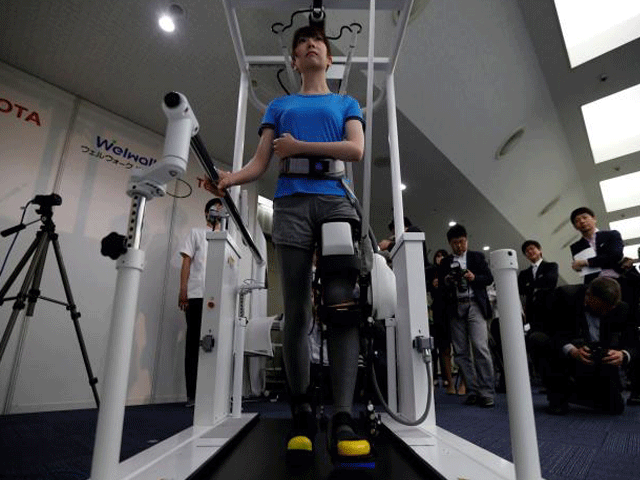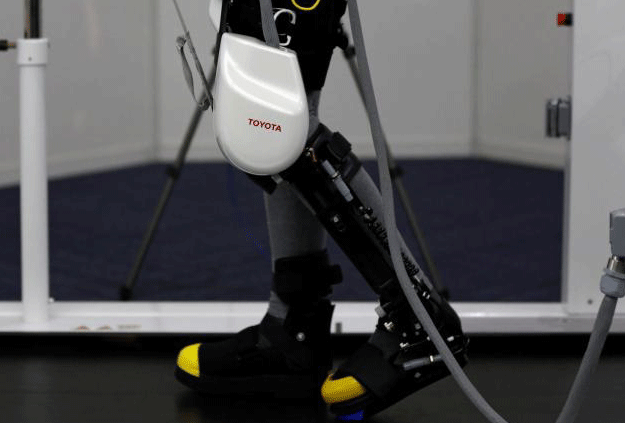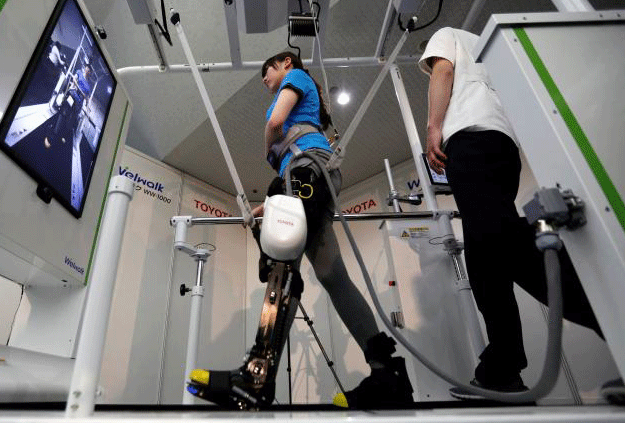
A decade after it began developing rehabilitation robots, the world's No.2 automaker on Wednesday said the system would be ready to hit the market by the end of 2017, two years after Honda launched a similar device.
 A model demonstrates Toyota Motor Corp's rehabilitation robot Welwalk WW-1000, designed to aid in the rehabilitation of individuals with lower limb paralysis, in Tokyo, Japan April 12, 2017. PHOTO: REUTERS
A model demonstrates Toyota Motor Corp's rehabilitation robot Welwalk WW-1000, designed to aid in the rehabilitation of individuals with lower limb paralysis, in Tokyo, Japan April 12, 2017. PHOTO: REUTERSHospitals and other care providers would be able to rent the system, designed for patients with lower limb paralysis, for 350,000 yen ($3,196.93) per month plus an initial fee of 1 million yen.
"The (system) will help to provide assistance to the elderly by enabling them to live more independent lives and to also provide support for their caregivers," Toyota said in a statement.
Japan is graying faster than the rest of the world, with the number of people aged 65 or older accounting for 26.7% of the population in 2015, dwarfing the global average of about 8.5%.
Chinese engineer marries female robot
Demand for aged-care services has boomed as the shrinking working population means that fewer able-bodied adults are available to look after the elderly.
Globally, sales of robots for elderly and handicap assistance will total about 37,500 units in 2016-2019, and are expected to increase substantially within the next 20 years, according to the International Federation of Robotics.
In 2015, Honda launched a rental service for its mobility contraption. Worn around the waist and attached to the thighs, it helps patients improve their stride.
 A model demonstrates Toyota Motor Corp's rehabilitation robot Welwalk WW-1000, designed to aid in the rehabilitation of individuals with lower limb paralysis, in Tokyo, Japan April 12, 2017. PHOTO: REUTERS
A model demonstrates Toyota Motor Corp's rehabilitation robot Welwalk WW-1000, designed to aid in the rehabilitation of individuals with lower limb paralysis, in Tokyo, Japan April 12, 2017. PHOTO: REUTERSSuch systems are a new frontier for major automakers, which are already competing to develop self-driving cars with an eye on the elderly as a major future market.
Toyota has invested heavily in artificial intelligence as part of its push into self-driving cars and has said it may become a maker of AI robots to help the elderly.







1732347751-0/Express-Tribune-(1)1732347751-0-270x192.webp)


1732264554-0/Copy-of-Untitled-(68)1732264554-0-270x192.webp)






COMMENTS
Comments are moderated and generally will be posted if they are on-topic and not abusive.
For more information, please see our Comments FAQ